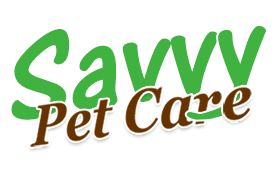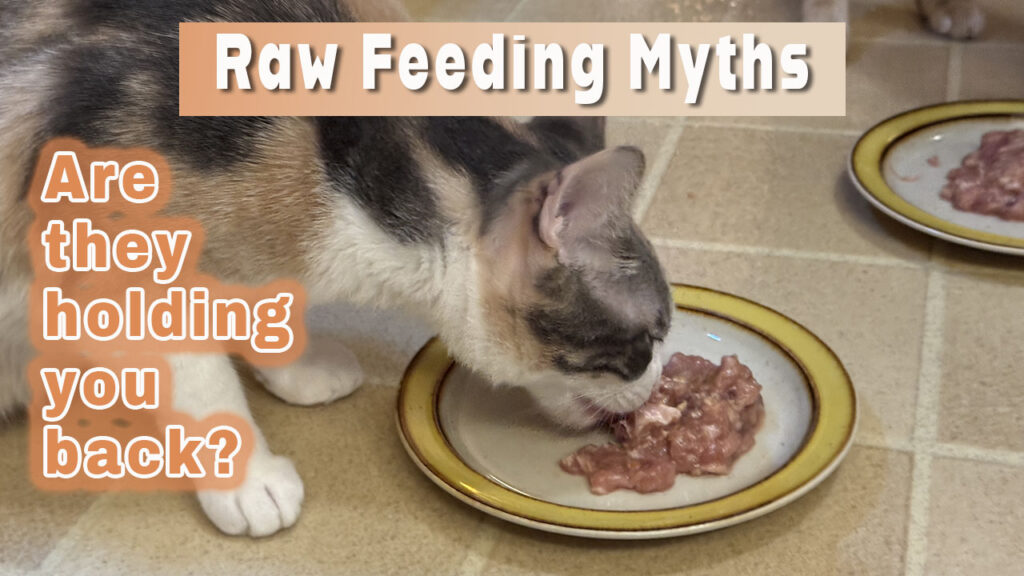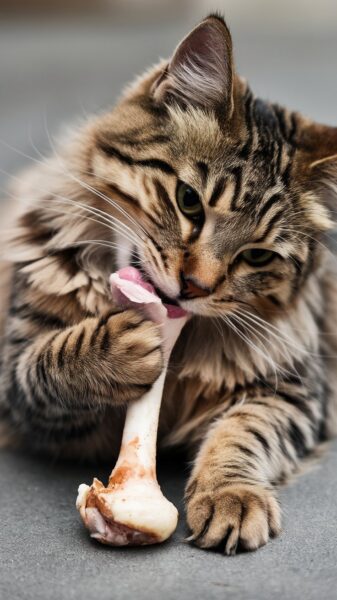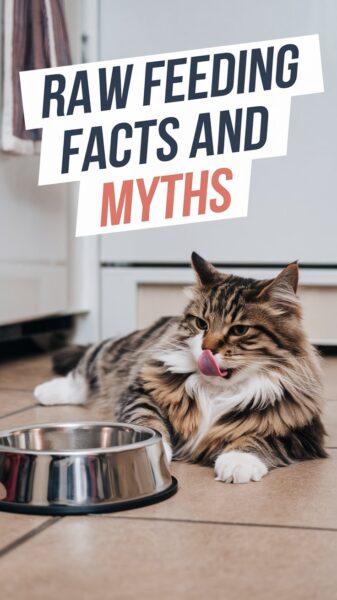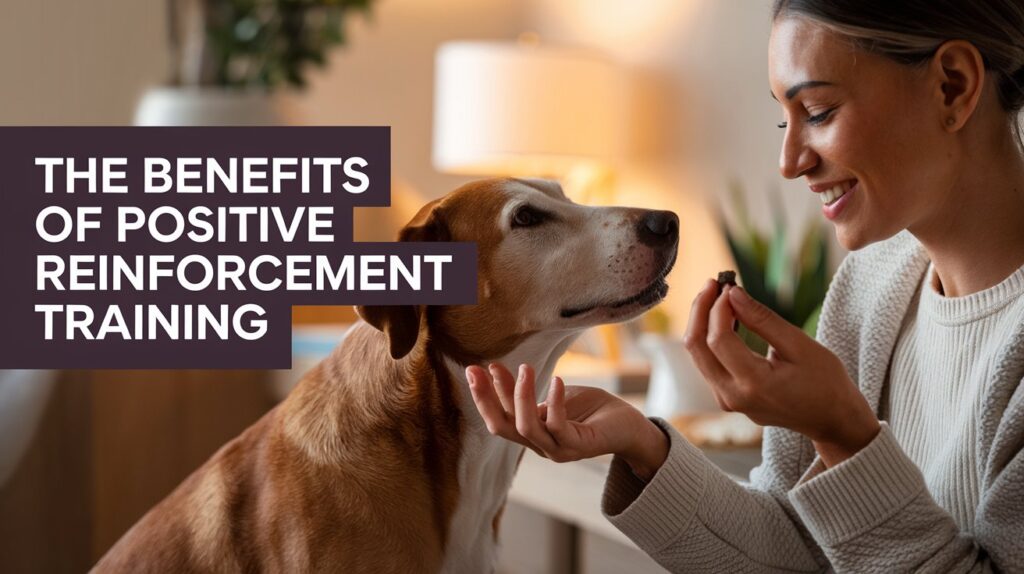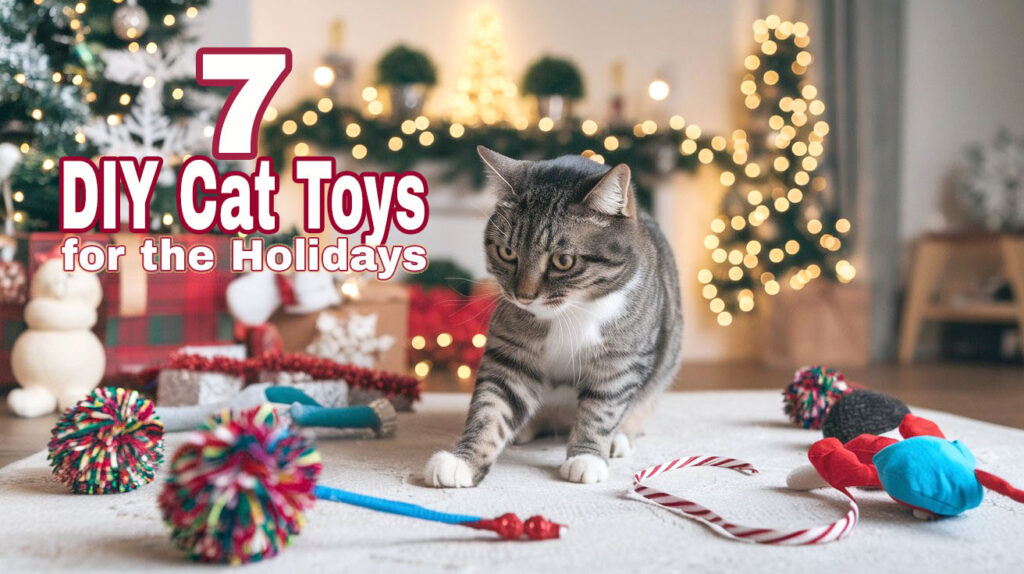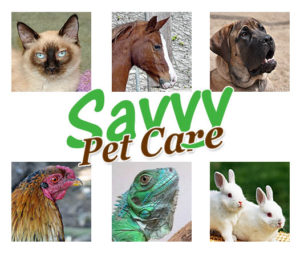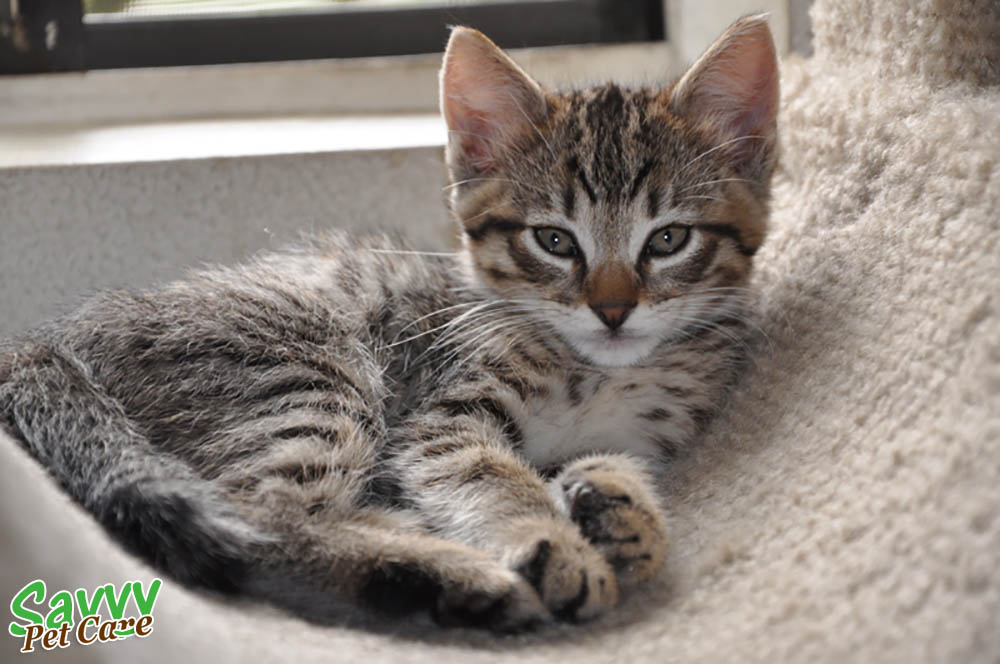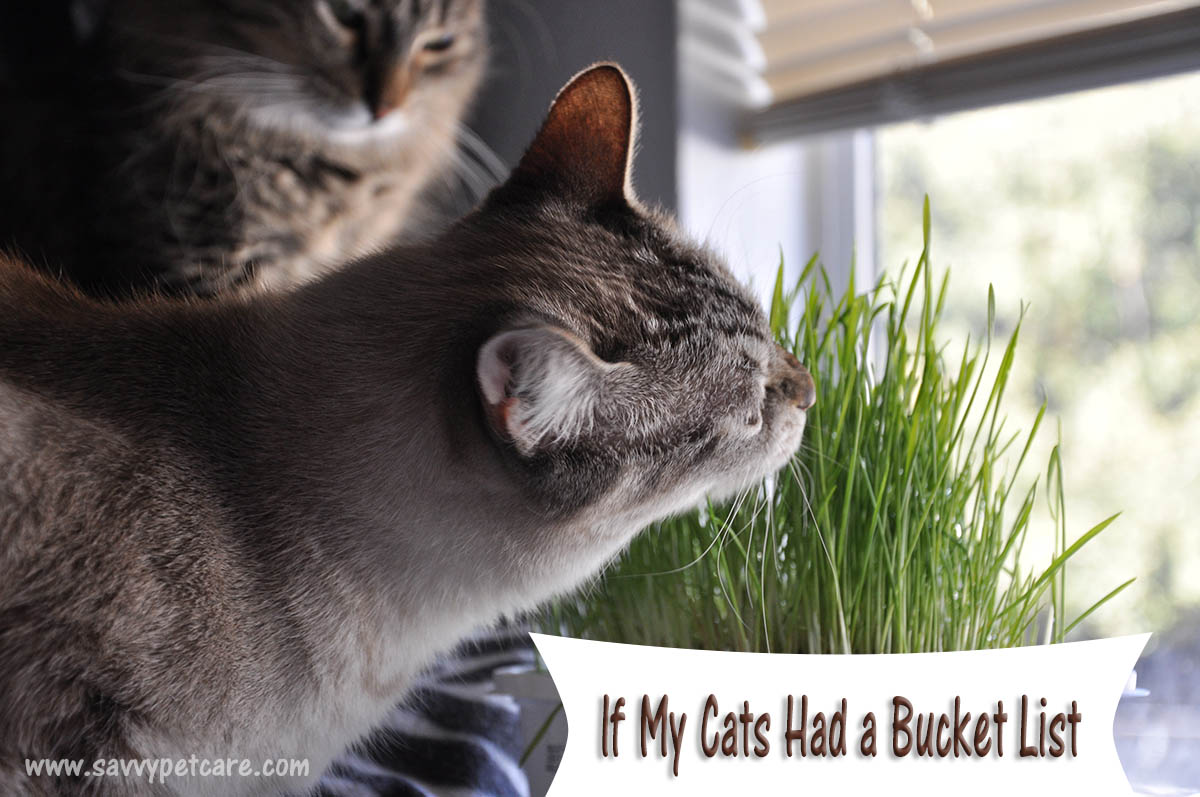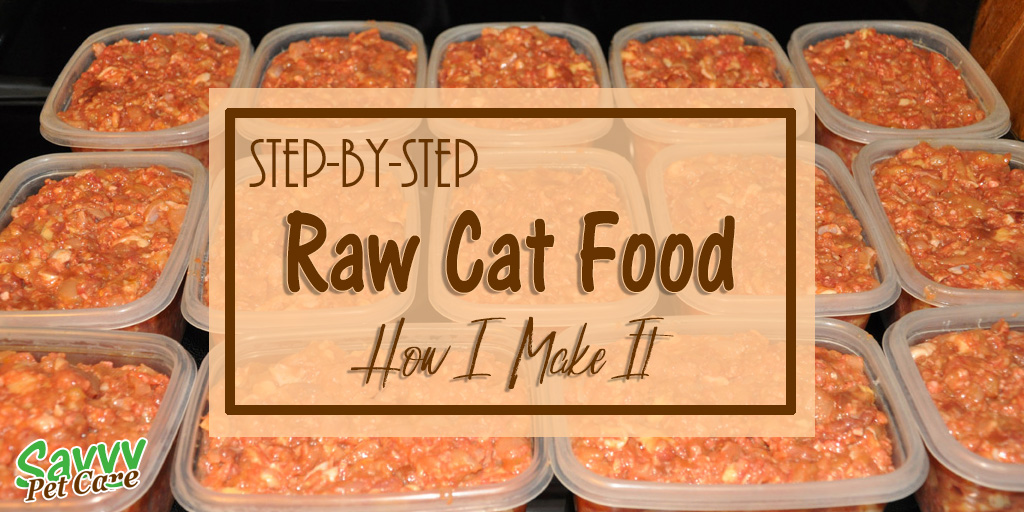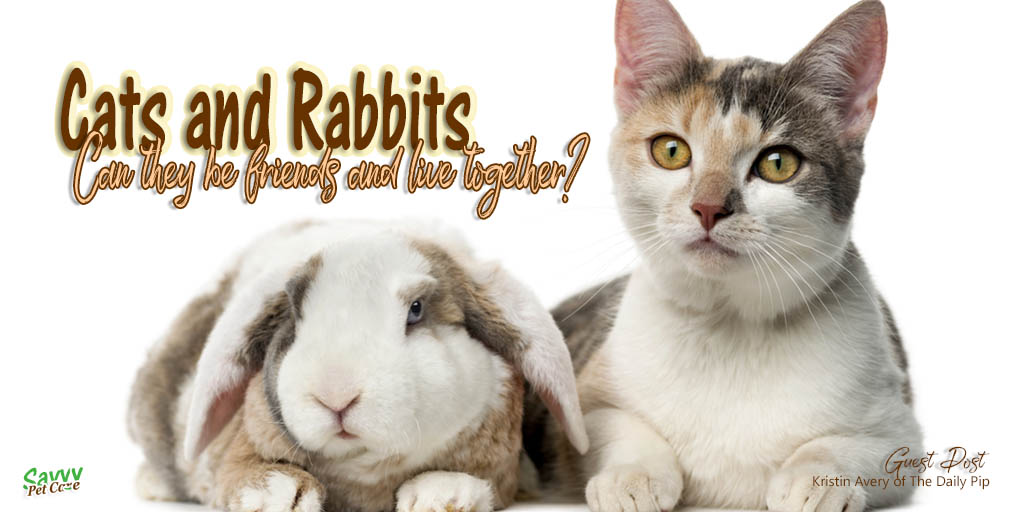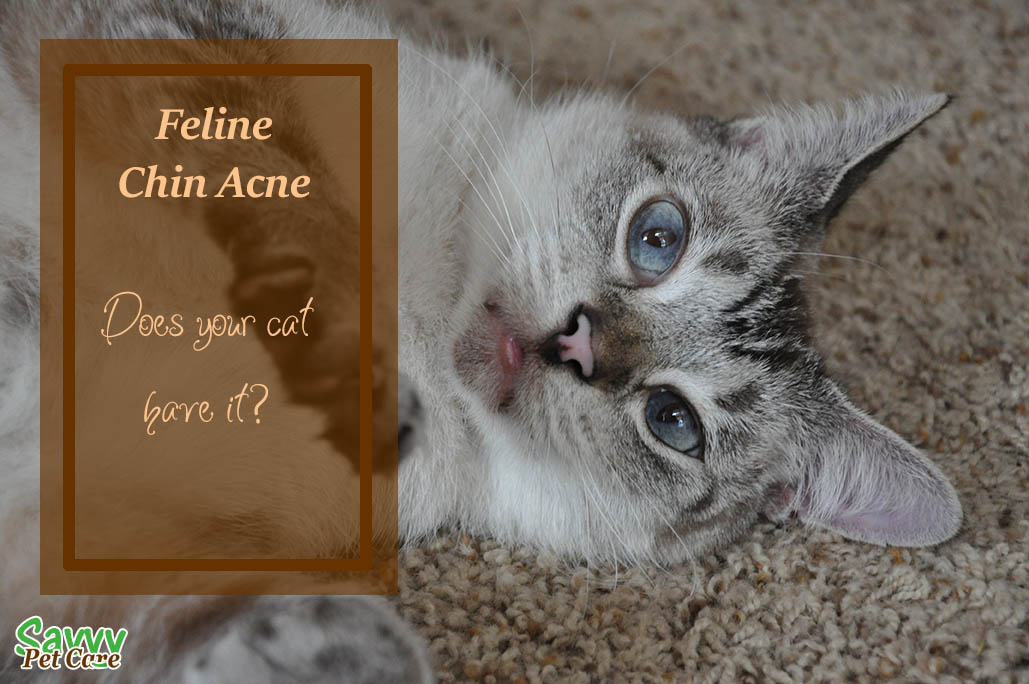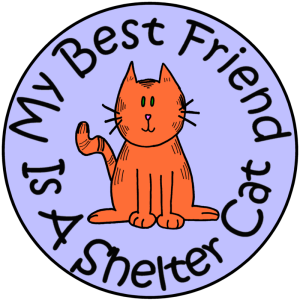When I first started researching raw feeding for cats, I wasn’t convinced. Between scary warnings about bacteria and worries about cost, it felt like more of a risk than a benefit. But as my cat struggled with chronic health issues, I decided to dig deeper into the facts vs myths. What I found changed my mind and Christy’s life.
Raw feeding isn’t as risky or complicated as it may seem, but unfortunately, common myths often stop people from even considering it. Let’s examine some of the biggest myths that may be holding you back from providing your cat with a healthier, more natural diet.
Myth #1: Raw Food Is Dangerous Because of Bacteria
This is probably the most common fear: Won’t raw meat make my cat sick due to bacteria like salmonella or E. coli? It’s a valid concern—after all, we’re taught to be careful when handling raw meat in our own meals. However, cats’ digestive systems are uniquely equipped to handle raw food.
Here’s the truth:
Cats are obligate carnivores, designed by nature to eat raw prey. Their stomachs have a highly acidic environment that helps kill harmful bacteria quickly. That doesn’t mean you can ignore food safety altogether, but when raw food is properly sourced and handled, the risk is minimal. I’ve been feeding raw for over 15 years now and have never had an issue.
Tip:
- Always buy fresh, high-quality meat from reputable sources.
- Practice proper food hygiene by cleaning surfaces and bowls regularly.
- Don’t leave raw food sitting out for extended periods.
By following these simple precautions, you’ll greatly reduce any risk.
Myth #2: Raw Feeding Is Too Expensive
If you’ve ever priced pre-made raw food at a pet store, you know it can be pricey. Most of the time it’s more expensive than steak! But here’s the good news: making raw meals at home is much more affordable. With a little planning, you can feed your cat a high-quality raw diet without breaking the bank.
Here’s the truth:
Buying meat in bulk from local butchers, farms, or even wholesale clubs can significantly cut costs. Many suppliers offer discounts on “scrap” meat or organ meats that are perfect for raw feeding but aren’t sold for human consumption. Homemade raw is definitely cheaper than commercial raw food and even good quality canned food. I find it to be pretty comparable to moderately priced canned food.
Tip:
- Freeze meat in pre-portioned servings to avoid waste.
- Compare prices at local butchers, farmers’ markets, and online suppliers.
- Consider joining a raw feeding co-op to buy in bulk.
Once you get into a routine, you will probably find that raw feeding costs less than premium canned food—and it could save you money on vet bills in the long run!
Myth #3: Raw Feeding Is Too Complicated
If you’ve ever seen a raw feeding guide filled with charts and percentages, it’s easy to feel overwhelmed. Do I need to be a nutritionist to do this correctly? Not at all! The basics of raw feeding are straightforward once you understand them.
Here’s the truth:
A balanced raw diet includes muscle meat, organs, and bones in roughly the proportions found in a whole prey animal. Start simple—like chicken or turkey—and gradually introduce variety. Even I have simplified the way I make raw now from the way I did it in the beginning!
Tip:
- Start with a simple recipe (e.g., chicken thigh meat, liver, and chicken necks).
- Use online calculators to help you determine portion sizes and nutritional balance.
- Batch prep meals to save time and store them in the freezer.
My upcoming e-book will include detailed meal plans and step-by-step instructions to make raw feeding easy. Don’t worry—you’ve got this!
Myth #4: Cats Won’t Eat Raw Food
If you’ve ever had a picky cat, this myth may feel all too real. What if they turn their noses up at raw food? The truth is, most cats can be transitioned to a raw diet, even if it takes some time and patience.
Here’s the truth:
Cats are creatures of habit, so sudden dietary changes can make them wary. But by transitioning gradually, even the pickiest eaters can come around. This makes it sound like you are transitioning to something they don’t really like but nothing could be further from the truth. They have just been conditioned to eat commercial food instead of a species-appropriate diet.
Tip:
- Start by mixing a small amount of raw meat with your cat’s current food.
- Gradually increase the ratio of raw food to commercial food over time.
- Experiment with different proteins—some cats may prefer turkey over chicken or beef.
Don’t get discouraged if it takes a few tries. Many raw-feeding advocates (including me!) had to experiment before finding what worked.
Myth #5: Cats Need Kibble to Clean Their Teeth
One of the most common misconceptions about kibble is that it helps clean a cat’s teeth. Many pet owners believe that if they switch to a raw diet, their cat’s dental health will suffer. But studies show that kibble often does little to prevent plaque buildup, and raw diets can actually improve dental health.
Here’s the truth:
Chewing raw meaty bones helps clean a cat’s teeth naturally. In fact, many raw feeders report healthier gums, less plaque, and fresher breath after switching to raw.
Jackson Galaxy, a renowned cat behaviorist, emphasizes that many cats swallow dry food whole, and even when they do chew, the mixing of kibble with saliva doesn’t effectively clean their teeth. He questions the dental benefits of kibble by asking, “When you crunch on a cracker, are your teeth getting cleaned?”
I admit that I rarely feed raw bones because they make a mess on the floor. If you have someplace to give these to your cats that is easy to clean up, go for it!
Tip:
- Offer raw meaty bones like chicken necks or wings to support dental health.
- Monitor your cat while eating bones to ensure safety.
- Avoid cooked bones, as they can splinter and cause injury.
Don’t Let These Raw Feeding Myths Hold You Back
Raw feeding may seem intimidating at first, but once you separate the facts from the myths, it’s a practical and rewarding way to give your cat a healthier, species-appropriate diet.
If you’ve been curious about raw feeding but felt held back by these myths, you’re not alone. That’s why I’m creating an e-book to help pet owners just like you confidently transition to raw feeding with step-by-step meal plans, troubleshooting tips, and cost-saving strategies.
Join the waitlist to be the first to access it—plus, get exclusive bonuses when it launches!




